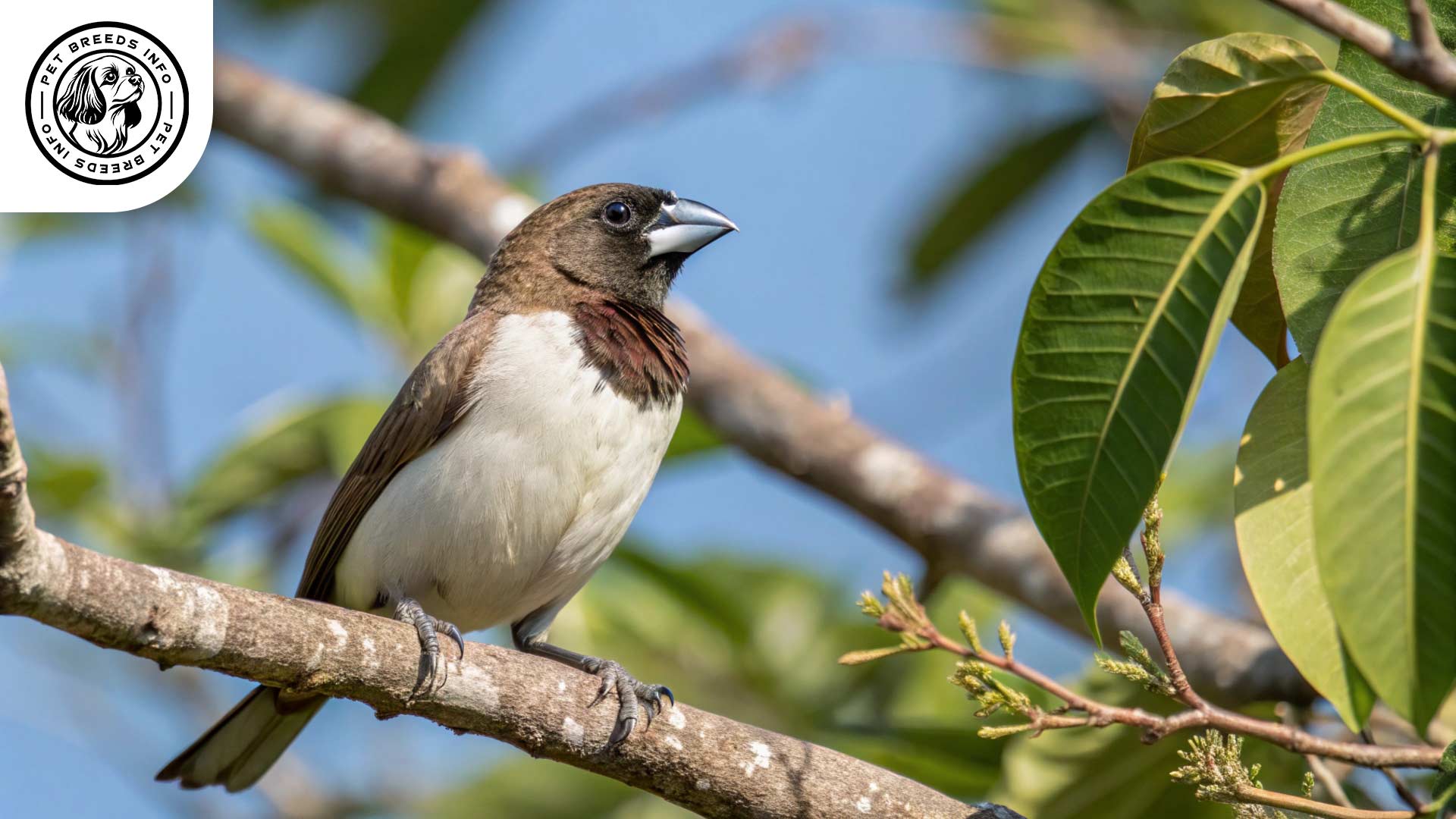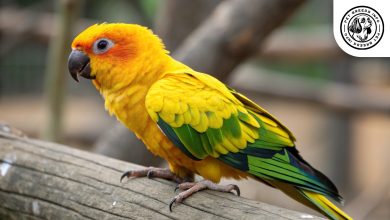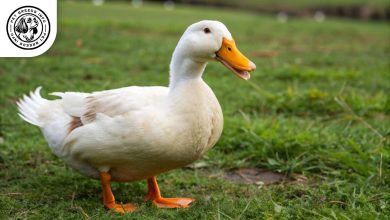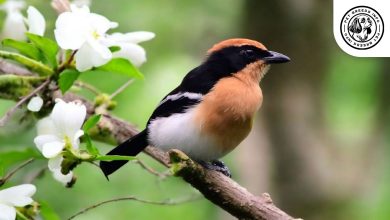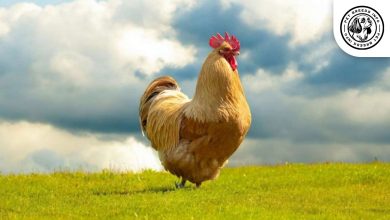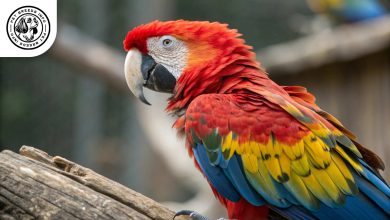White-rumped Munia Bird: Personality, Lifespan, Food & Care
General Introduction of the Breed
The White-rumped Munia (Lonchura striata) is a small bird species belonging to the finch family. It is also known as the Striated Finch. This bird is native to South and Southeast Asia, commonly found in regions such as India, Sri Lanka, Thailand, Malaysia, and Indonesia.
The White-rumped Munia has a long history of being bred in captivity due to its adaptability and appealing appearance. It is often kept as a pet or used in aviculture due to its social behavior and ease of care.
Table of Contents
| Common Name | White-rumped Munia |
| Scientific Name | Lonchura striata |
| Origin | South & Southeast Asia (India to Indonesia) |
| Size | 10–12 cm (4–5 in); ~12–15 grams |
| Lifespan | 6–8 years (can be longer with good care) |
| Egg Color | White |
| Clutch Size | 4–6 eggs |
| Temperament | Social, calm, observant |
| Cold-Hardy | Moderately – needs protection from extremes |
Physical Characteristics
The White-rumped Munia is a small bird, measuring around 10-12 cm (4-5 inches) in length and weighing approximately 12-15 grams. Males and females exhibit similar sizes.
It has a short, stout beak and a compact body. Its plumage varies depending on the subspecies, but typically, it has a brown body with a contrasting white rump, which gives it its name. Some variations have darker brown shades, and others may exhibit light streaks.
The bird’s eyes are small, round, and dark in color. Its short, rounded tail and small, rounded wings contribute to its swift flight.
One of its key distinguishing physical features is its conical beak, which is well-adapted for consuming seeds.
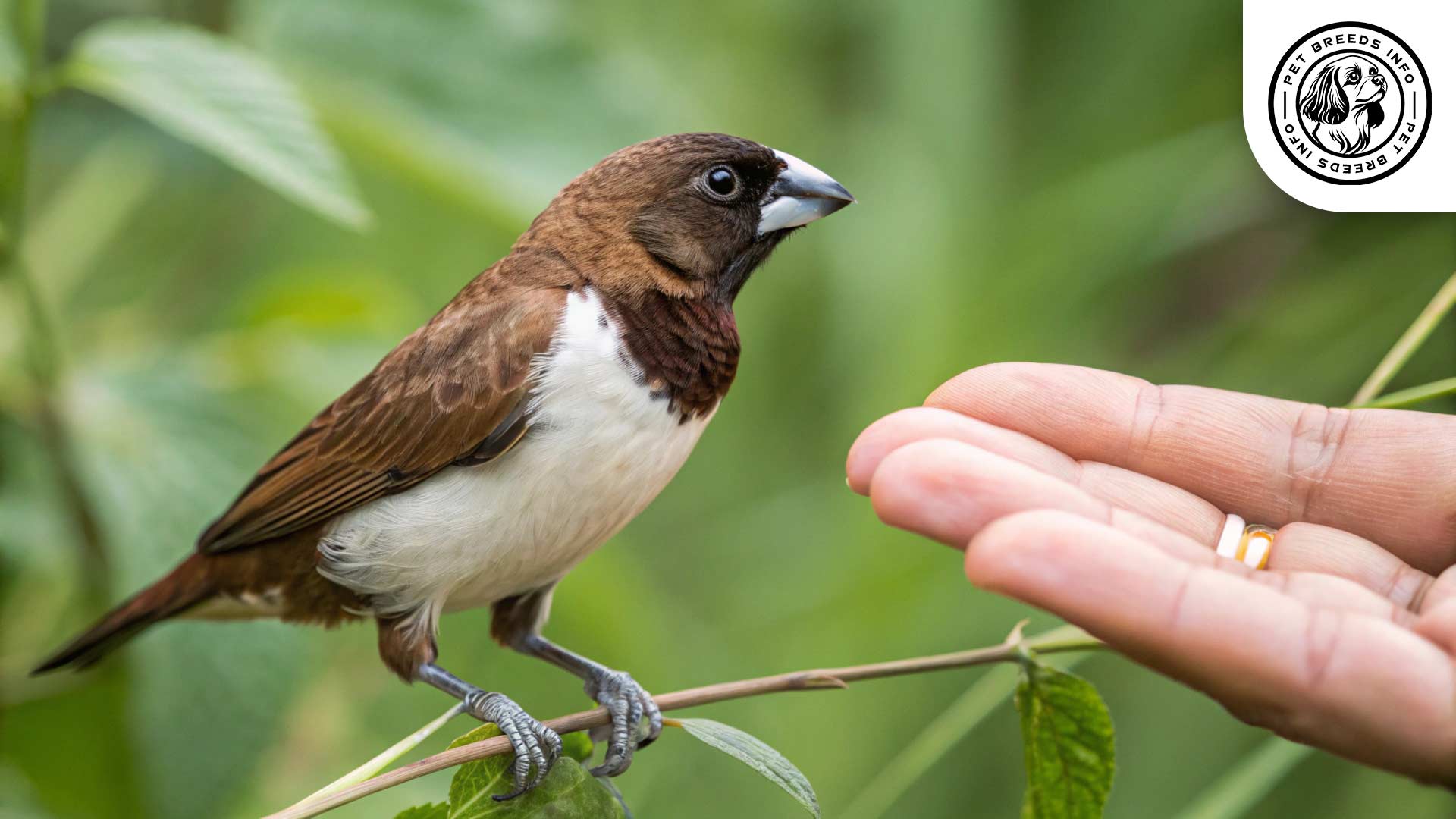
Personality and Temperament
The White-rumped Munia is an intelligent bird with a curious nature. It is highly social and prefers living in small flocks. While it is not an overly affectionate pet, it enjoys the company of its kind.
This bird is energetic with a lively demeanor. It needs space to fly and explore and does well in aviaries or spacious cages.
It has a calm temperament and generally interacts well with humans, though it is not as hands-on as some other pet birds. It interacts well with other small finches and similar species when housed together.
Due to its natural instincts, it exhibits playful behavior, often engaging in activities like fluttering and hopping between perches.
Read More: White-naped Lory
Care and Maintenance Requirements
The White-rumped Munia requires a spacious cage or aviary where it has room to fly. It thrives in environments that allow social interaction with other birds.
Grooming is minimal, as this bird maintains its feathers through regular preening. Occasional misting or access to a bird bath is recommended to keep its feathers clean.
It is tolerant of moderate temperatures but may require extra protection in extreme cold or heat. Avoid sudden drafts or excessive humidity.
Regular cleaning of the cage, perches, and feeding areas is necessary to maintain hygiene. Fresh water should always be available for drinking and bathing.
Diet and Nutrition
The White-rumped Munia primarily feeds on seeds, particularly millet, grass seeds, and small grains. It can also be given a formulated finch seed mix.
Adding fresh vegetables, soft fruits, and occasional protein sources such as boiled eggs can help supplement its diet.
Processed or salty foods should be avoided. Avocado, caffeine, and chocolate are toxic and must never be given.
Small portion sizes are appropriate. Food should be replenished as needed, and fresh water must always be available.
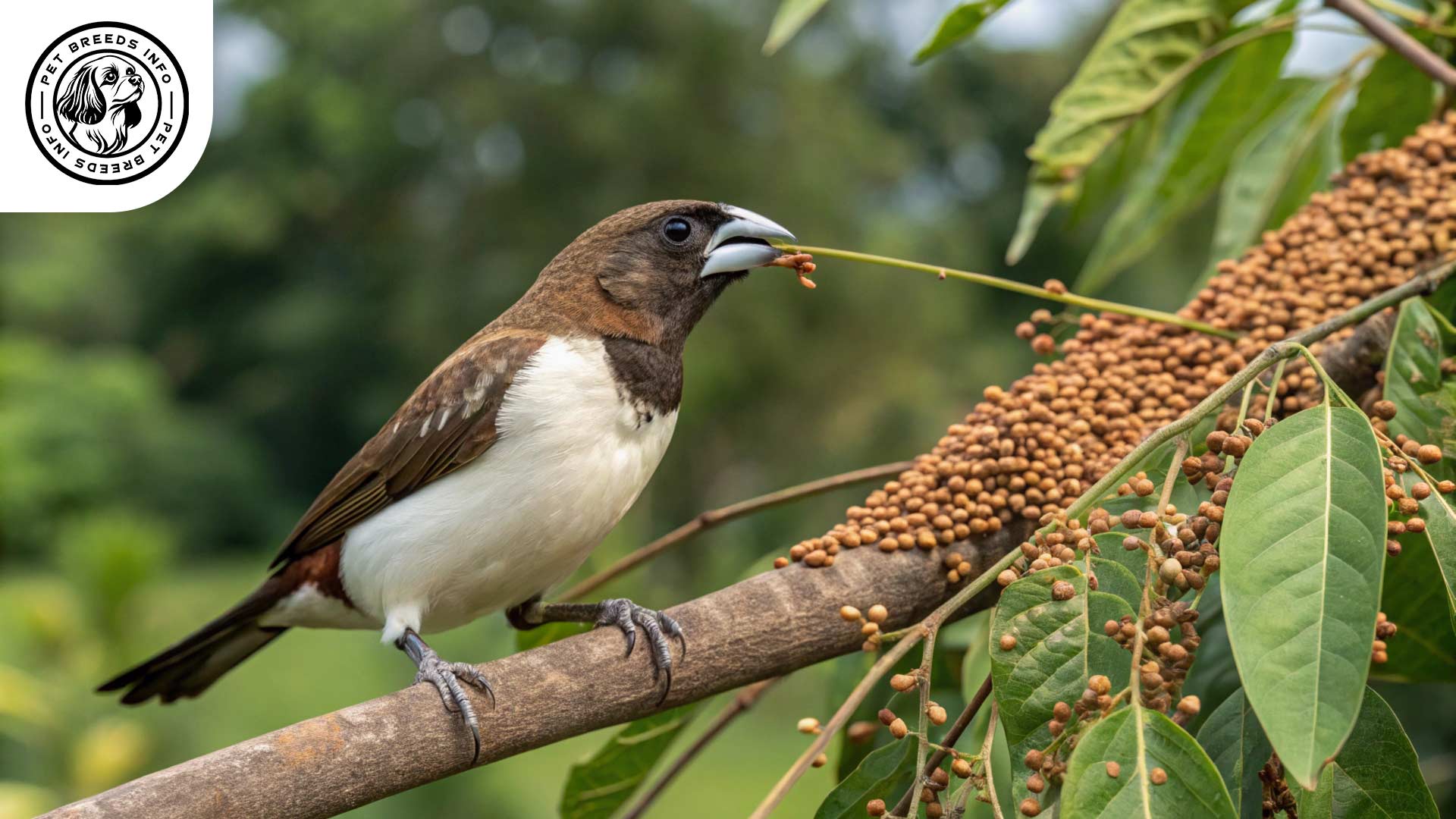
Health and Common Medical Issues
Common health concerns for the White-rumped Munia include respiratory infections, parasitic infestations, and nutritional deficiencies.
Providing a clean environment and a balanced diet helps prevent most health issues. Signs of illness include lethargy, breathing difficulties, or loss of appetite.
The average lifespan of this species is around 6 to 8 years in captivity, though proper care can extend this duration.
Routine veterinary check-ups for pet birds ensure early detection of potential health concerns.

Training and Behavior Management
Training the White-rumped Munia is possible but limited to encouraging natural behaviors and socialization.
Since it is a flock-dwelling bird, it learns from observing others rather than direct training.
Providing a stimulating environment with perches, toys, and natural elements can encourage exploration and activity.
Positive reinforcement, such as offering treats, can help in guiding them to explore new spaces without stress.
Read More: Red Canary Bird
Interaction with Other Animals and Humans
The White-rumped Munia is a well-socialized bird that enjoys interactions with other finches and small bird species.
It is not particularly interactive with humans but can become accustomed to their presence.
It is best suited for bird enthusiasts who enjoy observing rather than handling their pets.
Due to its peaceful nature, it is suited for families or individuals who prefer low-maintenance avian pets.
Price and Availability
The White-rumped Munia is relatively affordable, with prices ranging from $15 to $50 per bird, depending on location and breeder reputation.
It is widely available through avian breeders, pet stores, and bird adoption centers.
When acquiring this bird, ensure that the source prioritizes ethical breeding and proper care.
Conclusion and Final Thoughts
The White-rumped Munia is a delightful small bird, well-suited for bird enthusiasts looking for an easy-to-care-for pet.
It thrives in social environments and does best when kept with other finches.
Its low-maintenance grooming needs and calm demeanor make it an excellent choice for both apartment dwellers and those with outdoor aviaries.
Overall, potential owners should consider their ability to provide social companionship for the bird, as it thrives best in pairs or flocks.
Read More: Senegal Parrot Bird
FAQ
How big is the White-rumped Munia?
It’s a tiny bird, about 4–5 inches long and weighing just 12–15 grams.
Can it be kept alone?
It prefers the company of its kind and thrives best in pairs or small groups.
Does it need much training or interaction?
Not really. It’s more of a “watch-and-enjoy” bird than one for hands-on play.
What does it eat?
Mainly millet, seeds, grains, and some fresh veggies or soft fruits.
Is it noisy or quiet?
It’s generally quiet and peaceful, making it ideal for calm environments.
